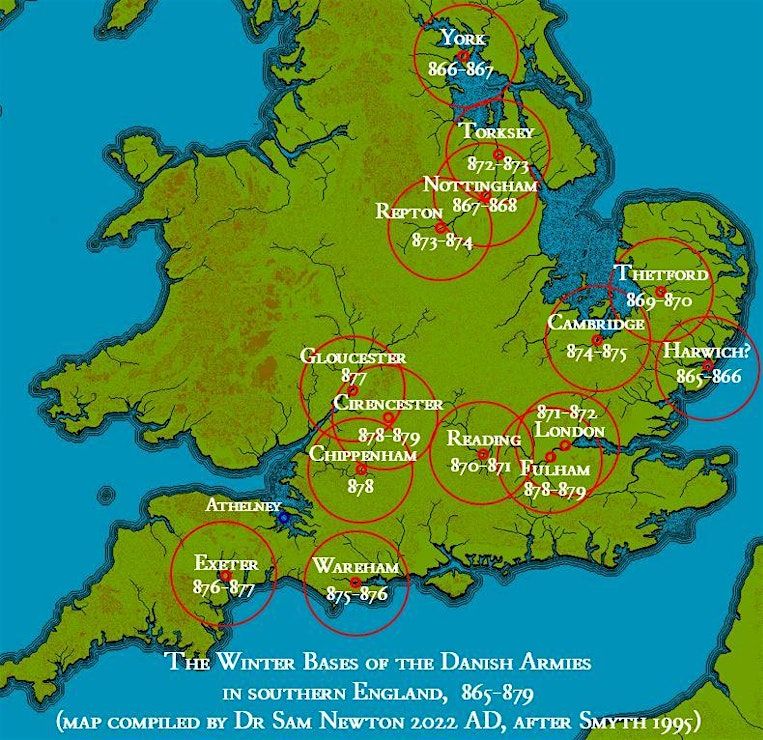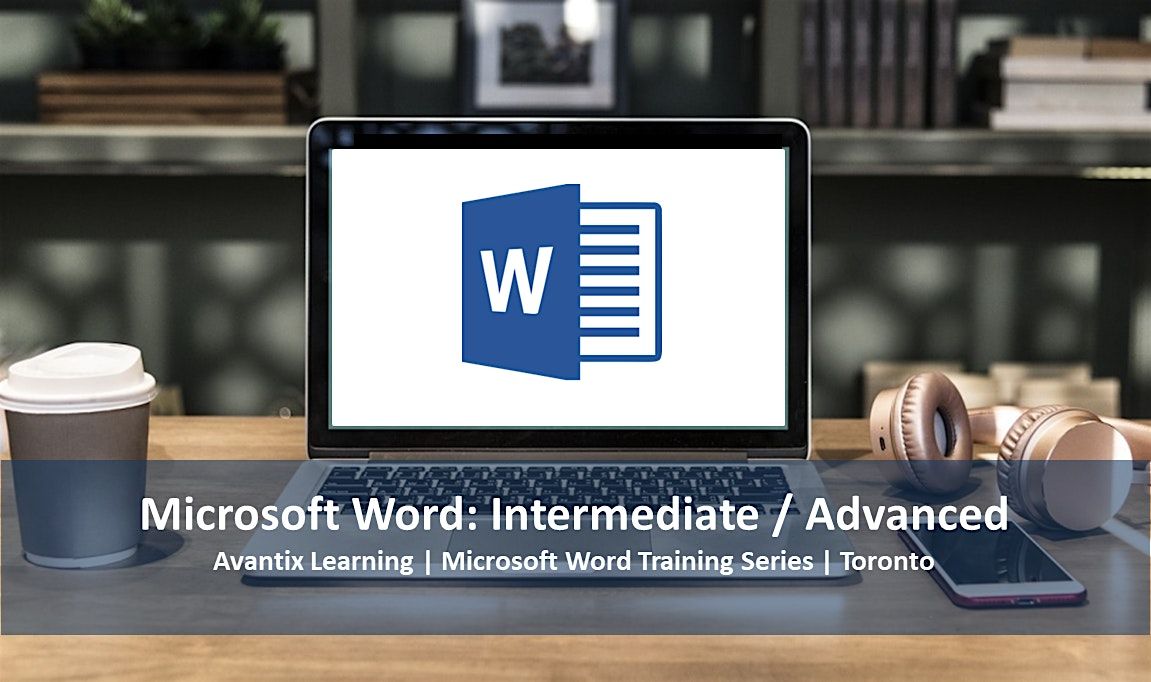The Viking Great Armies in England 865-879 - online with Dr Gareth Williams
Schedule
Fri Nov 22 2024 at 10:15 am to 03:00 pm
UTC+00:00Location
Online | Online, 0

About this Event
Title-picture above: the Great Army's second invasion of East Anglia and the taking of Thetford as its base for the winter of 869-670, as described in the entry for that year in the Winchester manuscript of the Anglo-Saxon Chronicle (edition & translation ©Dr Sam Newton 2021), with the impressive Iron Age ramparts of Thetford Castle, its likely citadel, in the background (©Jean Savigar 16th Sept. 2019). The Anglo-Saxon Chronicle is our primary historical authority for the death of the East Anglian king Edmund on 20th November 869, which here implies that he was killed in battle.
The Viking Great Armies in England 865-879 - with Dr Gareth Williams
The Anglo-Saxon Chronicle records the arrival in East Anglia in 865 of a micel here or ‘great raiding army’. In contrast to the strategy of seasonal short-term raids documented in the late 8th and early 9th centuries, this force over-wintered in England not just in 865-866 but repeatedly over a number of years, campaigning continuously in the various Anglo-Saxon kingdoms.
Through a combination of battles and diplomacy the micel here was able to dominate and occupy each of the kingdoms in turn, eventually conquering and settling in Northumbria, East Anglia and a large part of Mercia, and coming close to conquering the remainder of Mercia and Wessex. The successes of the micel here laid the foundations for the settlement of what later became known as the Danelaw.
This study day explores the size and character of the micel here, and how it was able to achieve success against major established kingdoms. It will also explore how the activities of the micel here indirectly shaped the character of Viking settlement in the Danelaw in a way that was neither typically Anglo-Saxon nor Scandinavian.
Below: a sketch-map showing the movements of the Danish armies in England, 865-879, as suggested by the references in the Anglo-Saxon Chroncicle to their winter-bases. The location of the West Saxon island-stronghold of Athelney in the Somerset Fens is also shown (©Dr Sam Newton 2022).

Provisional Timetable
10.15–11.15: What was the great army?
The first lecture of the day introduces the micel here, including discussion of the implications of the choice of the word here for our understanding of the size and character of the force. It will continue with a chronological overview of the activities attributed to the micel here, looking at what the sources tell us (and don’t tell us) about their interaction with the different Anglo-Saxons, and at the way that a ‘complete’ historical narrative has developed over the intervening period, despite the lack of evidence for some of the assumptions behind this narrative. The chronological overview will end by looking at the pattern of settlement carried out by elements of the micel here across the different former Anglo-Saxon kingdoms.
The lecture will conclude with a brief discussion of the military aspects of the fourteen year campaign, and will introduce the idea (to be explored further in the other lectures) that while the Vikings enjoyed some success on the battlefield, it was their unprecedented strategy and control of logistics (far removed from romantic imagery of all-powerful Viking warriors) that enabled them first to campaign for years at a time in hostile territory and subsequently to conquer and settle much of England.
11.15-11.45: coffee break
11-45-12.45: The people of the great army.
This lecture will explore in more detail the composition of the micel here. An important aspect here is the fact that while the Anglo-Saxon Chronicle habitually refers to it as a single entity, it also refers on a number of occasions to multiple leaders, and to elements joining and leaving ‘the’ army. This suggests a composite and dynamic force with shifting membership, rather than a single army campaigning for the whole of the period from 865 to 879. This links into recent developments in the interpretation of Viking fleets more generally in which scholars have drawn parallels with gangs and pirates in other eras and cultures, suggesting the existence of smaller identity groups which could be temporarily submerged within the larger whole.
This lecture will also consider the significance of some of the named leaders of the micel here, some of whom (such as Ivarr the Boneless) span English and Scandinavian traditions, and also the boundaries between history/literature/legend, while the English leaders also include figures who have been the subject of veneration in different ways, including St Edmund of East Anglia and Alfred ‘the Great’ of Wessex.
While the label ‘great army’ places emphasis on the warriors within the micel here, it is also important to consider the role of others within that entity. This includes specialist non-combatant male support roles, but there is also both historical and archaeological evidence for the presence of women and children travelling with Viking ‘great armies’ in England and Francia. Building on that point, this session will conclude with discussion of whether the activities of the micel here were planned as a migration from the outset, or whether permanent settlement represented a change of strategy some years after the initial attacks.
12.45-13.45: lunch break
13.45-c.15.00: The archaeology of the great army.
Archaeological evidence for the activities of the micel here has fundamentally changed our understanding of the subject in recent years, providing important new evidence, and forcing scholars to re-evaluate the established interpretations placed on written sources, and on the limited archaeology previously available. Evidence here falls into three groups: hoards, the winter camps used by the micel here, and single finds associated with the movements of the micel here. This aspect was dominated for a long time by important excavations at Repton in Derbyshire in the late 1970s and early 1980s, which produced a paradigm of what a Viking winter camp was like, but more recent archaeological investigations at Torksey in Lincolnshire and Aldwark in North Yorkshire, along with reinvestigations at Repton itself, have forced fundamental reinterpretations of the size and character both of the camps and the forces that occupied them. Another new direction is the study of wider archaeological landscapes rather than just the sites themselves. The lecture will conclude by revisiting the themes explored throughout the day, and how developments in archaeology have altered altered our understanding of the micel here, which will lead into a final open discussion covering the whole day.
Some Suggestions for Optional Background Reading
- Abels, R. P. 1998. Alfred the Great: War, Kingship and Culture in Anglo-Saxon England. Routledge, London
- Abels, R. 2003. ‘Alfred the Great, the micel hæðen here and the Viking threat’. In T. Reuter (ed.), Alfred the Great: Papers from the Eleventh-Century Conferences. Routledge, London, 265–279.
- Biddle, M. & Kjølbye-Biddle, B. 1992. ‘Repton and the Vikings’, Antiquity 66 (250), 36–51.
- Biddle, M. & Kjølbye-Biddle, B. 2001. ‘Repton and the “great heathen army”, 873–4’. In J. Graham-Campbell, R. Hall, J. Jesch & D. Parsons (eds), Vikings and the Danelaw: Select Papers from the Proceedings of the Thirteenth Viking Congress. Oxbow, Oxford, 45–96.
- Carroll, J., Harrison S.H. & Williams G. 2014. The Vikings in Britain and Ireland. British Museum, London.
- Cooijmans, C. 2020. Monarchs and Hydrarchs: The Conceptual Development of Viking Activity across the Frankish Realm (c. 750–940). Routledge, Abingdon. [Doesn’t discuss the great armies in England, but provides an important and fascinating point of comparison for activities in Francia]
- Hedenstierna-Jonson, C. & Garcia Losquiño, I. 2023. Viking Camps: Case Studies and Comparisons. Routledge, Abingdon.
- Hadley, D. M. & Richards, J. D. et al. 2016. ‘The winter-camp of the Viking Great Army, AD 872–3, Torksey, Lincolnshire’, The Antiquaries Journal 96, 23–67.
- Hadley, D. M. & Richards, J. D. 2018. ‘In search of the Viking Great Army: Beyond the winter camps’, Medieval Settlement Research 33, 1–17.
- Hadley, D. M. & Richards, J. D. 2021. The Viking Great Army and the Making of England. Thames and Hudson, London and New York.
- Jarman, C. 2018. ‘Resolving Repton: has archaeology found the great Viking camp?’ British Archaeology (March–April 2018), 28–35.
- Jarman, C. 2019. ‘Resolving Repton: a Viking Great Army winter camp and beyond’, Current Archaeology 352 (July 2019): 18–25.
- Jarman, C. 2021. River Kings: A New History of the Vikings from Scandinavia to the Silk Roads. William Collins, London.
- McLeod, S. 2014. The Beginning of Scandinavian Settlement in England: The Viking ‘Great Army’ and Early Settlers, c. 865–900. Brepols, Turnhout.
- Price, N. S. 2014. ‘Ship men and slaughter wolves: Pirate polities in the Viking age’. In S. Amirell and L. Müller (eds), Persistent Piracy: Maritime Violence and State Formation in Global Historical Perspective. Palgrave Macmillan, New York, 51–68.
- Price, N. S. 2016. ‘Pirates of the North Sea? The Viking ship as political space’. In L. Melheim et al. (ed.), Comparative Perspectives on Past Colonisation, Maritime Interaction and Cultural Integration. Equinox, Sheffield, 149–176. [The two articles above present very similar arguments, so it is only necessary to read both for a very specialised interest]
- Raffield, B. 2013. ‘Antiquarians, archaeologists and Viking fortifications’, Journal of the North Atlantic 20, 1–29.
- Raffield, B. 2016. ‘Bands of brothers: A re‐appraisal of the Viking Great Army and its implications for the Scandinavian colonization of England’, Early Medieval Europe 24 (3), 308–337.
- Raffield, B., Greenlow, C., Price, N. & Collard, M. 2016. ‘Ingroup identification, identity fusion, and the formation of Viking warbands’, World Archaeology 48 (1), 35–50.
- Williams, G. 2008. ‘Raiding and warfare’. In S. Brink and N. Price (eds), The Viking World. Routledge, London and New York, 193–203.
- Williams, G. 2013. ‘Towns and identities in Viking England’. In D. M. Hadley & L. ten Harkel (eds), Everyday Life in Viking-Age Towns. Oxbow, Oxford, 14–34.
- Williams, G. 2017. Anglo-Saxon vs Viking Warriors, AD 865–1066. Osprey, Oxford.
- Williams, G. (ed.) 2020. A Riverine Site Near York: A Possible Viking Camp? British Museum, London.
- Williams, G. 2023. ‘Viking camps: A historiographical overview’, in C. Hedenstierna-Jonson & I. Garcia Losquiño (eds), Viking Camps: Case Studies and Comparisons. Routledge, Abingdon, 11-64. [The whole of this book is well worth reading, as it contains recent contributions (sometimes with conflicting opinions) by most of the scholars currently active in this field. However, it is quite expensive. This particular article provides an overview of past and current research on the subject, and most of the themes covered in the book, and is available for free online at https://library.oapen.org/bitstream/handle/20.500.12657/85642/9781003347682_10.4324_9781003347682-3.pdf?sequence=8&isAllowed=y ]
About Dr Gareth Williams
Gareth Williams studied history at the universities of St Andrews and Bergen. From 1996 to 2024 he was a curator at the British Museum, with responsibility for early medieval coins and latterly also Viking artefacts. He has had teaching and research links with a number of universities in Britain and Scandinavia, including two years as Senior Researcher on the Viking Phenomenon research project at the University of Uppsala in 2018-2019. He has honorary research affiliations at the universities of Cambridge and Nottingham, and acts as academic advisor to York Archaeology, and as the external member of the Museum of Cultural History in Oslo’s steering group for the development of a new Museum of the Viking Age. He is also working as a freelance historian and archaeologist, specialising in the Anglo-Saxons and Vikings. He is currently working on a book on early medieval coins as source materials for study, co-authored with Professor Rory Naismith, and on two others on different aspects of Viking warfare.

What happens next:
When you book tickets, it is essential that you open an account for yourself on Eventbrite at the same time (if you haven't already done so). Do not book via the anonymous 'guest account' option.
This is because of the way in which Eventbrite works with Zoom - without an account, it won't let you sign in to join the study-day on Zoom.
After booking you will receive a confirmation email. The essential Zoom link will follow on the morning of the study-day.
It's a good idea to have set up and tested your Zoom configuration well in advance and be aware of how to use the controls. There is guidance and a test link here. Please also check for updates to both Zoom and Eventbrite.
If you would like to keep informed about Wuffing Education study-days, click on the 'Follow' button in Eventbrite Wuffing page to hear details about our events as soon as they are published.
And you can click here to receive our occasional despatches about forthcoming events with Wuffing Education.
Where is it happening?
OnlineGBP 30.00 to GBP 45.00




















